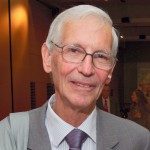Link to Pubmed [PMID] – 10441072
Semin. Cell Dev. Biol. 1999 Apr;10(2):189-95
The mammalian SWI/SNF complex is a chromatin remodelling complex that uses the energy of ATP hydrolysis to facilitate access of transcription factors to regulatory DNA sequences. This complex, that was initially described as a co-factor for nuclear receptors, has recently been associated with the control of cell growth. Two of the subunits known as BRG-1 and brm can associate with the Retinoblastoma tumour suppressor gene product and co-operate with this protein for repression of E2F activity. In addition, expression of brm is frequently down-regulated upon cellular transformation and re-introduction of this protein into fibroblasts transformed by activated ras induces partial reversion of the transformed phenotype. Finally, the hSNF5/INI1 gene, encoding another subunit of the SWI/SNF complex, is subject to bi-allelic mutations in rhabdoid tumours, a very aggressive form of paediatric cancers. These observations provide a novel link between malignant transformation and chromatin remodelling machineries.
